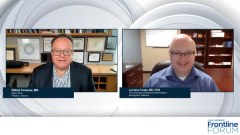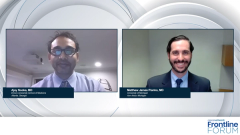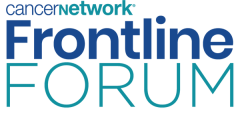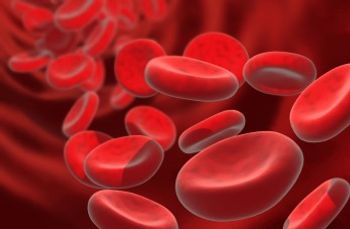
Frontline Treatment Options for Transplant-Ineligible Newly Diagnosed Multiple Myeloma
Dr Luciano Costa provides an overview of the currently available treatment options for patients with transplant-ineligible, newly diagnosed multiple myeloma.
Episodes in this series
Rafael Fonseca, MD: Hello, and thank you for joining us to this CancerNetwork® Expert Encounters program titled “Recent Advances in Multiple Myeloma, Applying the Real-World Evidence to Clinical Practice.” I'm Rafael Fonseca. I'm the chief innovation officer at Mayo Clinic in Arizona. Joining me today, I have my esteemed colleague, Dr Luciano Costa. I would like to invite Dr Costa to introduce himself. Luciano?
Luciano Costa, MD, PhD: Thank you Dr Fonseca, it's a pleasure to join you today on this program. I'm Luciano Costa, I'm a professor of medicine and director of the multiple myeloma program and the University of Alabama at Birmingham. Thank you for joining me today.
Rafael Fonseca, MD: No, thank you very much for joining me as well. As you know, this program is an extension of a meeting that Dr Costa and I had at the ASCO meeting with other experts in ASCO 2022 where we discussed some key data updates, but also how those real world evidence apply for multiple myeloma, so, the next 30 minutes we're going to reveal a little bit of this data and then think about how we're applying some of this information and share our insights as to how this will be relevant for myeloma patients. So, if that's OK, let's go ahead and get started. So, Luciano, just maybe for starters, what are the available treatment options for patients with transplant ineligible, newly diagnosed multiple myeloma patients?
Luciano Costa, MD, PhD: So, that's a very interesting group Dr Fonseca, as you know, traditionally our field has divided the patients, at least at the time of the initial diagnose, within those groups of transplant eligible and transplant ineligible. Which, it really is - means really different things in the U. S as it does in most of the rest of the world. This really comes from the mindset where transplant eligibility is mostly determined by age. I think when we talk about data for transplant ineligible, we really talk about data for older individuals, particularly those individuals older than 70. So, without going too far back in the past, I think really the biggest innovation of that group was initially Thalidomide in development of regimens such as AMPT and that was shown to be inferior to a regimen with lenalidomide and dexamethasone given continuously on the so-called first trial. And from that on, I think it developed, as I see, in a couple of different branches. One is the addition of a proteasome inhibitor, and that was done on a randomized phase three trial in the US called SWOG 0777 that, as you know, enrolled patients without the intent of pursuing transplant, which turned out to be a population that is younger than the patients that we see in Europe for - that is truly transplant ineligible. And a more recent trial they called the MAIA trial added daratumumab to this lenalidomide and dexamethasone backbone, also showing improvement in progression free survival and overall survival. If you want to be fair, there's yet a third regimen that is a blast by the data on PFS and overall survival, which is the daratumumab plus melphalan prednisolone and bortezomib. That was showing to be superior to the melphalan prednisolone and bortezomib on the European ALCYONE trial. However, that doesn't get a lot of traction in the US because we really have moved away from the melphalan based regimens.
Newsletter
Stay up to date on recent advances in the multidisciplinary approach to cancer.




















































































